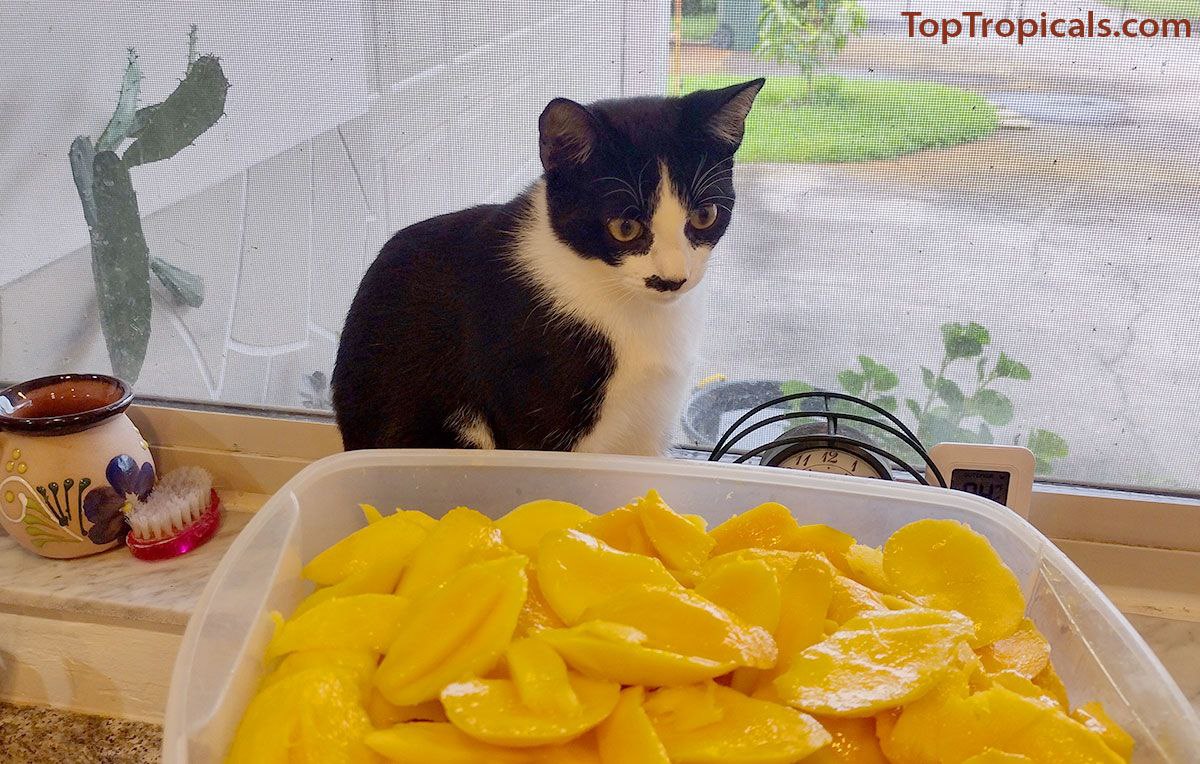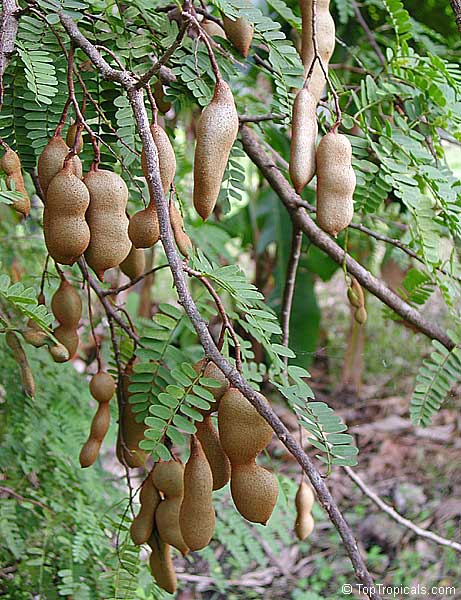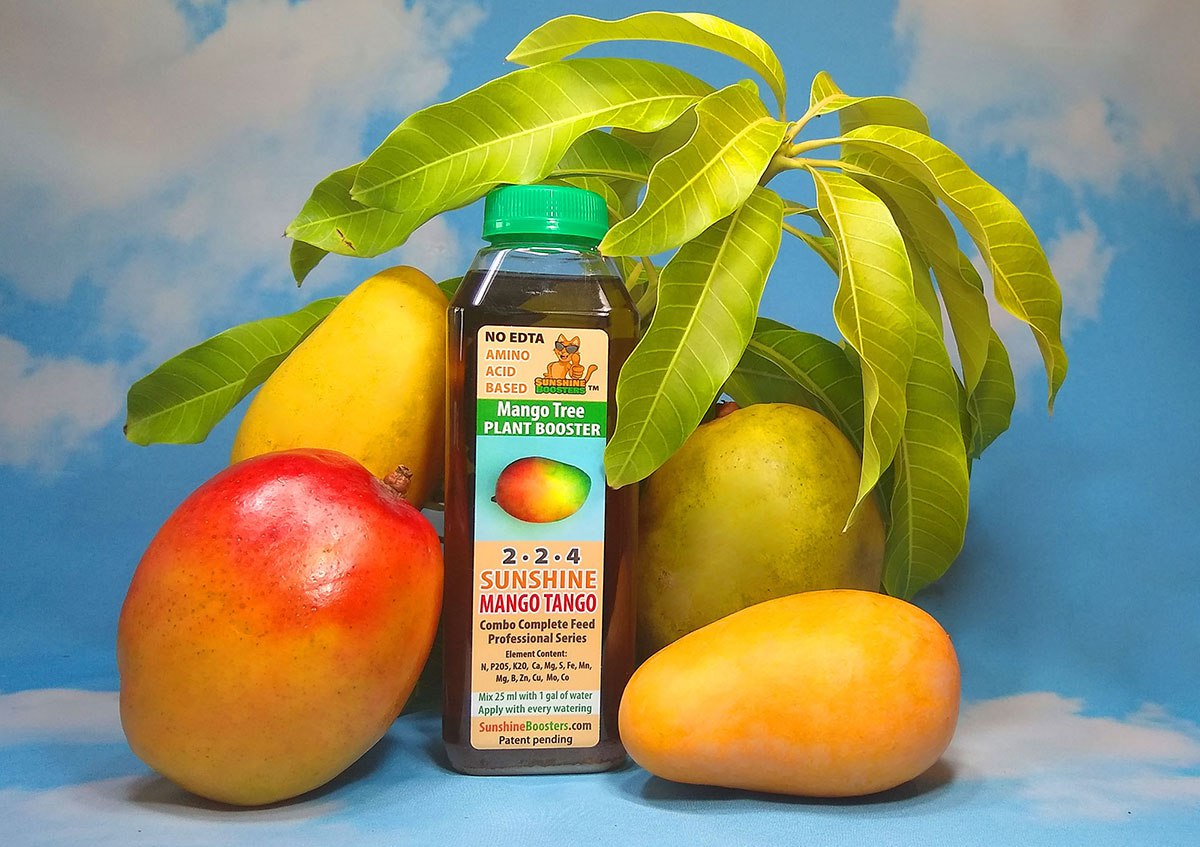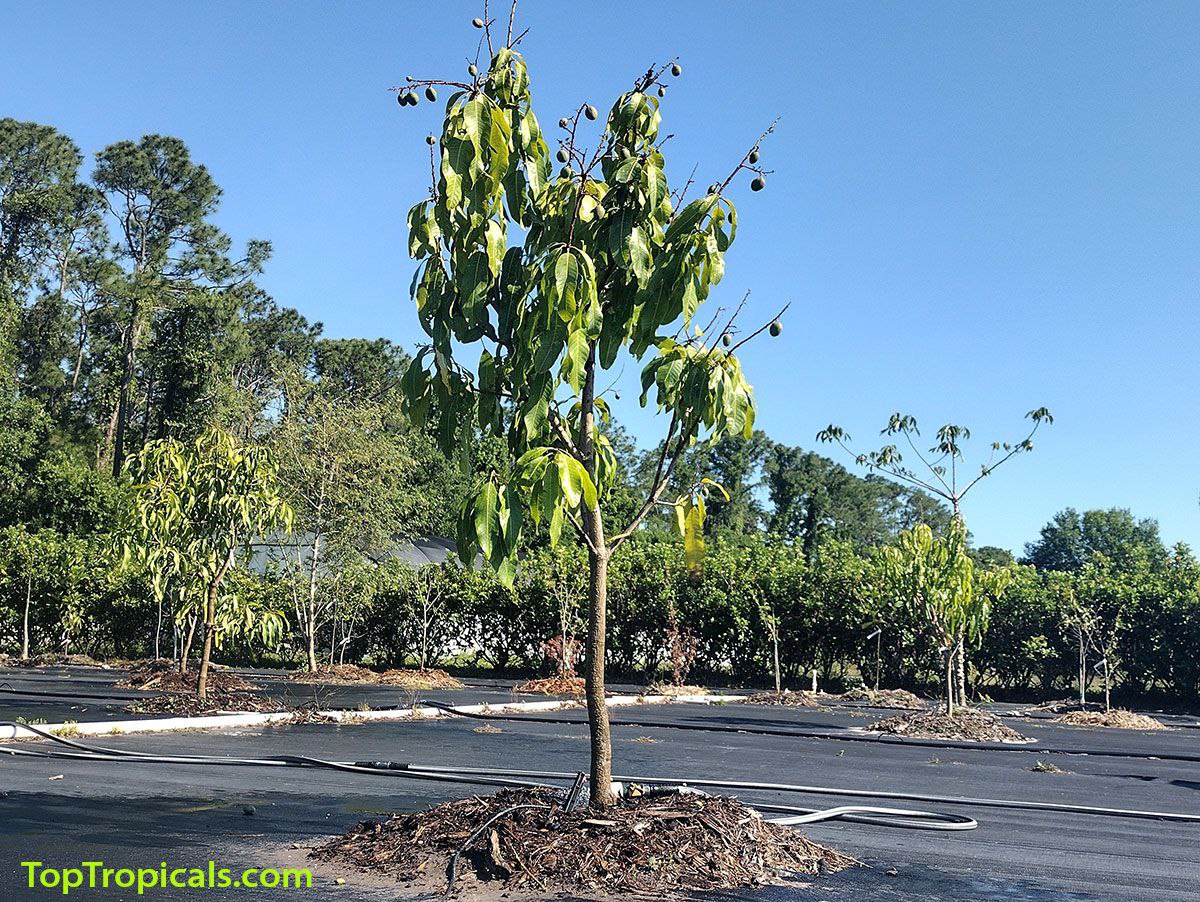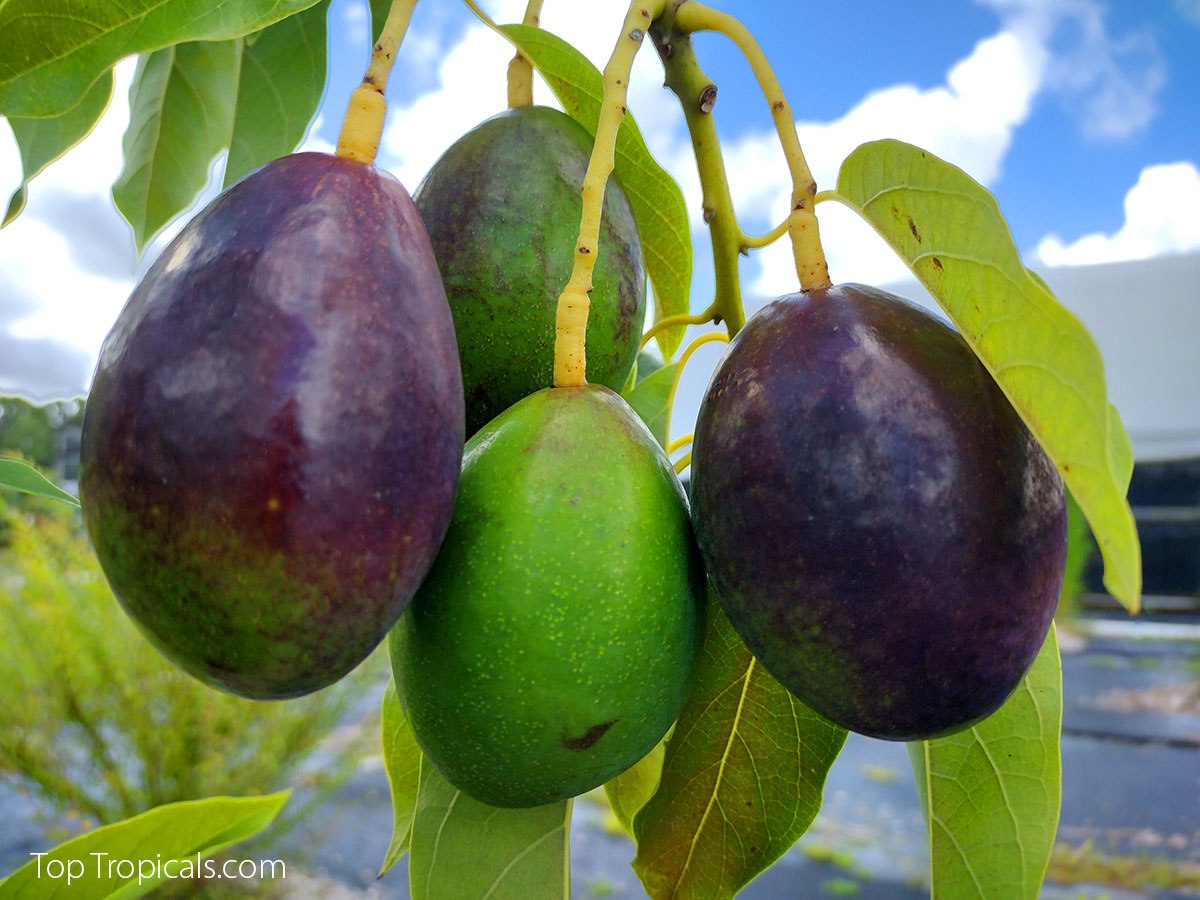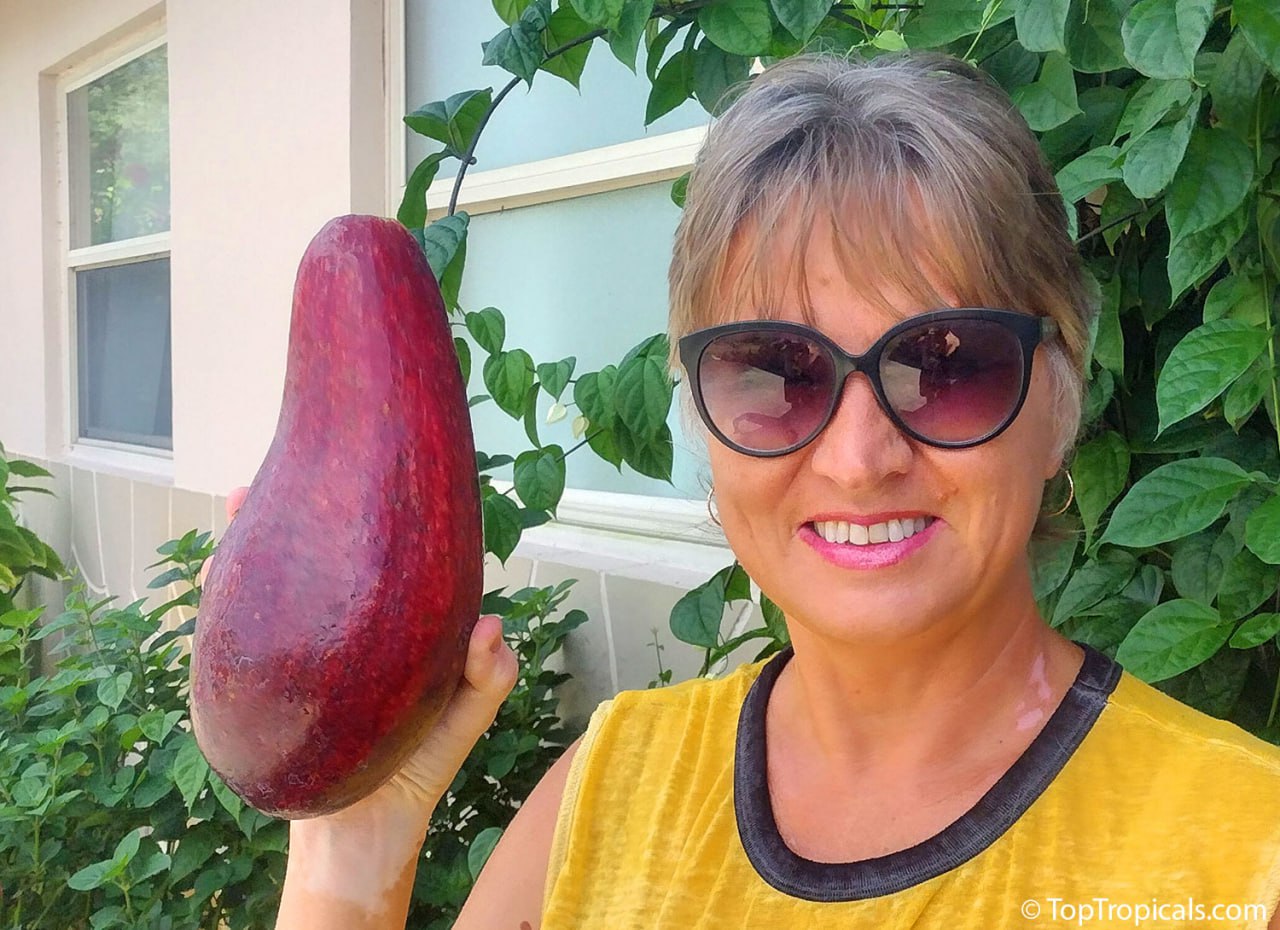Garden Blog - Top Tropicals
Why buy Mango from the store? Plant the trees today to enjoy your own fruit tomorrow!
Why buy Mango from the store? Plant the trees today to enjoy your own fruit tomorrow!
🛒 Shop Mango trees
#Food_Forest
🏵 TopTropicals
🛒 Shop Mango trees
#Food_Forest
🏵 TopTropicals
How productive is Tamarind
⚡️ How productive is Tamarind - for previous post 👆
Tamarind tree (Tamarindus indica) can live for over 200 years and produce both edible fruit and valuable timber.
#Food_Forest #Fun_Facts
🏵 TopTropicals
Tamarind tree (Tamarindus indica) can live for over 200 years and produce both edible fruit and valuable timber.
#Food_Forest #Fun_Facts
🏵 TopTropicals
How to make a Mango tree fruit?
How to make a Mango tree fruit?
We use SUNSHINE Mango Tango - Mango Tree Booster, for healthy mango trees and profuse fruit production.
📚 Learn how to make a Mango tree fruit
#Food_Forest #How_to #Fertilizers
TopTropicals.com
We Grow Happiness
We use SUNSHINE Mango Tango - Mango Tree Booster, for healthy mango trees and profuse fruit production.
📚 Learn how to make a Mango tree fruit
#Food_Forest #How_to #Fertilizers
TopTropicals.com
We Grow Happiness
How to water a newly planted Mango tree?
How to water a newly planted Mango tree?
Never rely solely on your sprinkler system when planting a new tree, especially during the first week or even several weeks if you have no rain. By rain, we mean a nice downpour. Here in Florida, we usually have a hot and dry spring, and while springtime is great for starting new trees, additional hose-watering becomes essential for establishing them during the first months.
📚 Learn how to water your mango tree
#How_to #Food_Forest
TopTropicals.com
We Grow Happiness
Never rely solely on your sprinkler system when planting a new tree, especially during the first week or even several weeks if you have no rain. By rain, we mean a nice downpour. Here in Florida, we usually have a hot and dry spring, and while springtime is great for starting new trees, additional hose-watering becomes essential for establishing them during the first months.
📚 Learn how to water your mango tree
#How_to #Food_Forest
TopTropicals.com
We Grow Happiness
Cat Philemon is eating Avocado!
Cat Philemon is eating Avocado!
Avocado is good for you. It's one of the Superfoods. Even cats know this fact.
Did you know that Avocado comes in hundreds of varieties, not just green and black?
📚 Check out Avocado Varieties Guide
🛒 Shop Avocado Trees
📸 😺 👇 Share your cats in comments!
#PeopleCats #Food_Forest
@TopTropicals
Avocado is good for you. It's one of the Superfoods. Even cats know this fact.
Did you know that Avocado comes in hundreds of varieties, not just green and black?
📚 Check out Avocado Varieties Guide
🛒 Shop Avocado Trees
📸 😺 👇 Share your cats in comments!
#PeopleCats #Food_Forest
@TopTropicals
New Complete Guide to Avocado Varieties
New Complete Guide to Avocado Varieties. How to choose the right type of Avocado.
How many varieties of Avocado are there in cultivation? Did you know that there are hundreds of them? You probably thought there were only 2 kinds - black and green?
You may not realize is that this basic (but practical!) classification doesn't encompass all the wonderful qualities avocados have to offer.
There are numerous hybrids in cultivation, and once you plant your first tree and taste the REAL fruit (not from the grocery store), you'll be eager to explore other varieties. It's a guarantee! While it's true that avocado fruit can vary in "butter" content, most superior varieties are equally delicious.
This Avocado Variety Guide helps to choose the right variety for you. With its interactive tool, you can sort cultivars by fruit shape and quality, cold hardiness, origin, crop season, flower type A or B, tree habit and more.
🛒 Shop Avocado Varieties
#Food_Forest #Fun_Facts #How_to
🏵 TopTropicals
How many varieties of Avocado are there in cultivation? Did you know that there are hundreds of them? You probably thought there were only 2 kinds - black and green?
You may not realize is that this basic (but practical!) classification doesn't encompass all the wonderful qualities avocados have to offer.
There are numerous hybrids in cultivation, and once you plant your first tree and taste the REAL fruit (not from the grocery store), you'll be eager to explore other varieties. It's a guarantee! While it's true that avocado fruit can vary in "butter" content, most superior varieties are equally delicious.
This Avocado Variety Guide helps to choose the right variety for you. With its interactive tool, you can sort cultivars by fruit shape and quality, cold hardiness, origin, crop season, flower type A or B, tree habit and more.
🛒 Shop Avocado Varieties
#Food_Forest #Fun_Facts #How_to
🏵 TopTropicals
Who thinks this is an Eggplant? Do you? What is it?
🍆 Who thinks this is an Eggplant? Do you? What is it?
Correct answer:Avocado Red Russel.
🛒 Shop Avocado Varieties
📸 😺 👇 Share your cats in comments!
#Food_Forest #PeopleCats #Nature_Wonders
🏵 TopTropicals
Correct answer:
🛒 Shop Avocado Varieties
📸 😺 👇 Share your cats in comments!
#Food_Forest #PeopleCats #Nature_Wonders
🏵 TopTropicals
Cat of the Day - Mr B
🐈 Cat of the Day - Mr B.
Did you know that Lemon Grass freshens your pet's breath? Mr B knows. He is the fan. He doesn't brush his teeth before going to bed, but claims he has a lemon-fresh breath. Good night!🌜
📸 😺 👇 Share your cats in comments!
🛒 And get some Lemon Grass - a versatile performer in the kitchen where it can be used in teas, beverages, herbal medicines, Eastern inspired soups and other dishes.
🐾 More #PeopleCats in our Garden:
PeopleCats.Garden
#Remedies #Food_Forest
JOIN 👉 @TopTropicals
Did you know that Lemon Grass freshens your pet's breath? Mr B knows. He is the fan. He doesn't brush his teeth before going to bed, but claims he has a lemon-fresh breath. Good night!🌜
📸 😺 👇 Share your cats in comments!
🛒 And get some Lemon Grass - a versatile performer in the kitchen where it can be used in teas, beverages, herbal medicines, Eastern inspired soups and other dishes.
🐾 More #PeopleCats in our Garden:
PeopleCats.Garden
#Remedies #Food_Forest
JOIN 👉 @TopTropicals
Happy Fathers Day - June 16!
Happy Father's Day - June 16!
❤️ Have a perfect day with dear friends, loving family, and healthy meals.
Consider growing a #Food_Forest to add some good stuff to your diet 🍌🍍🌶🍒
💥 Use this discount coupon for any plants you want:
FATHERS2024
Your savings with this code:
5% off orders $100+
10% off orders $150+
15% off orders $200+
Excluding S/H. Exp. 6-17-24
🎁 Last minute gift shopping: get a Top Tropicals Gift Card with 15% bonus value.
🛒 Shop Fruit Trees and Edibles
🏵 TopTropicals
❤️ Have a perfect day with dear friends, loving family, and healthy meals.
Consider growing a #Food_Forest to add some good stuff to your diet 🍌🍍🌶🍒
💥 Use this discount coupon for any plants you want:
FATHERS2024
Your savings with this code:
5% off orders $100+
10% off orders $150+
15% off orders $200+
Excluding S/H. Exp. 6-17-24
🎁 Last minute gift shopping: get a Top Tropicals Gift Card with 15% bonus value.
🛒 Shop Fruit Trees and Edibles
🏵 TopTropicals
What tree is the most prolific while its fruit tastes as good as Lychee?
Longan fruit, Euphoria longana
🍇 What tree is the most prolific while its fruit tastes as good as Lychee? Longan!
🛒 Plant your own Longan Tree
#Food_Forest
. . . . . . . . . . . . . . . . . . . . . . . .
🔴 Join 👉 TopTropicals
. . . . . . . . . . . . . . . . . . . . . . . .
- 🔴 Longan (Euphoria longana) is a medium sized tree from China, it can be pruned to maintain a small tree size for container culture.
- 🔴 This Lychee relative has stiffer leaves, more wind resistance and fruits more prolifically and regularly than its famous cousin.
- 🔴 The flesh is sweet, aromatic and juicy, very similar to Lychee. It is usually eaten fresh but can be canned or dried.
- 🔴 The crisp skin is easy to remove and the white flesh has a texture and sweetness reminiscent of litchi.
- 🔴 Longan tree is fast growing, vigorous, and very easy to grow.
It is not fussy about soil and water. Young trees are usually air layered and start fruiting right away.
🛒 Plant your own Longan Tree
#Food_Forest
. . . . . . . . . . . . . . . . . . . . . . . .
🔴 Join 👉 TopTropicals
. . . . . . . . . . . . . . . . . . . . . . . .
